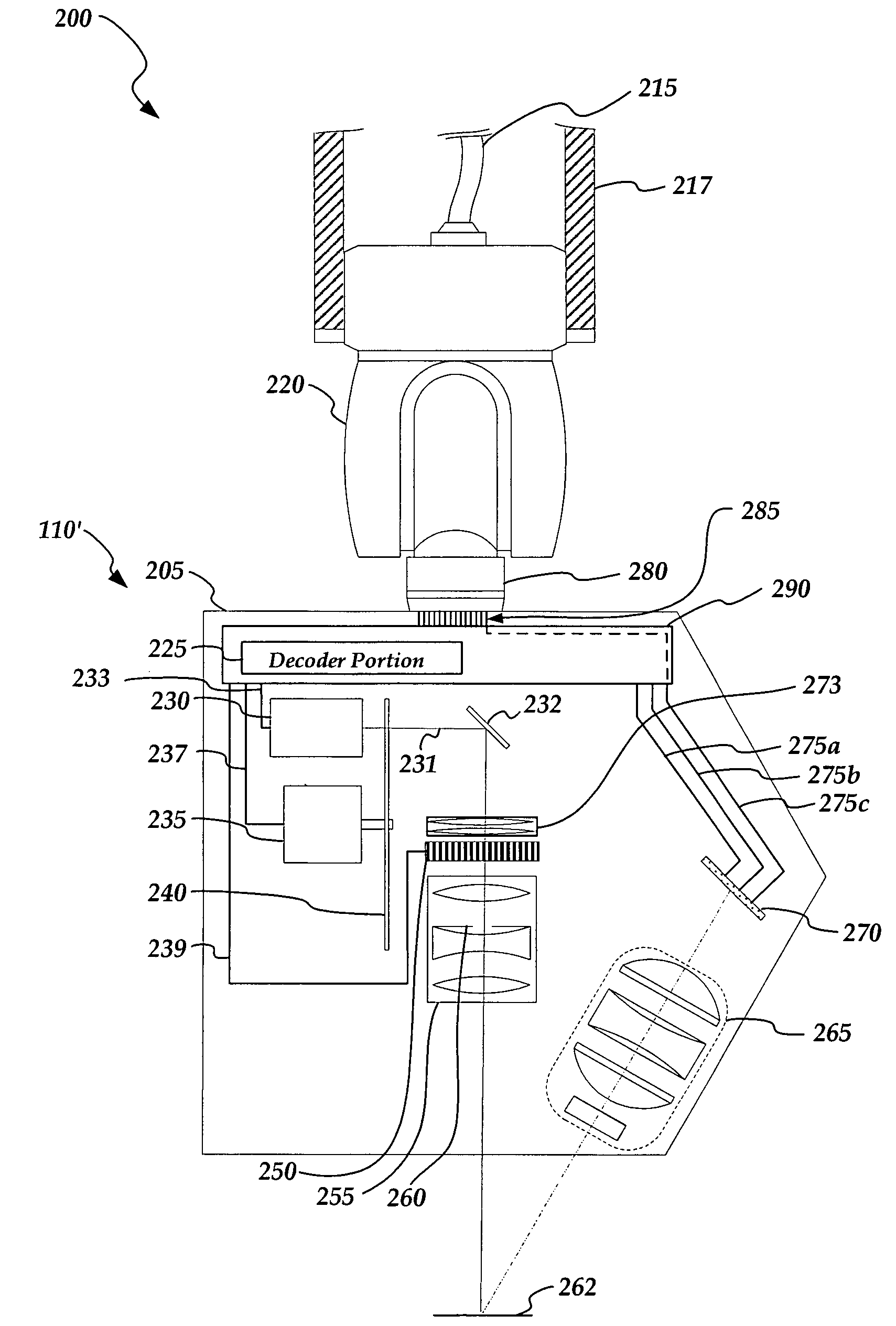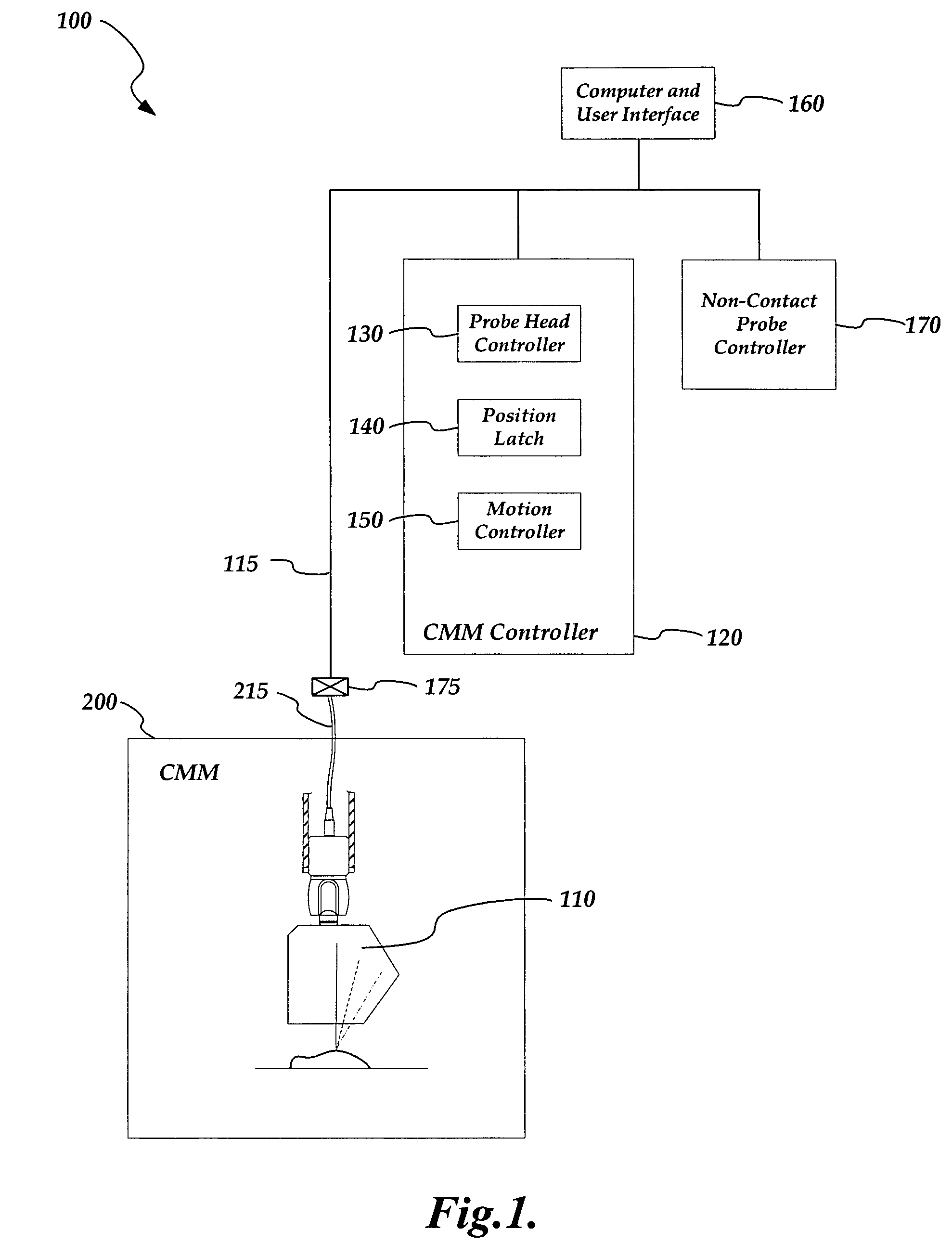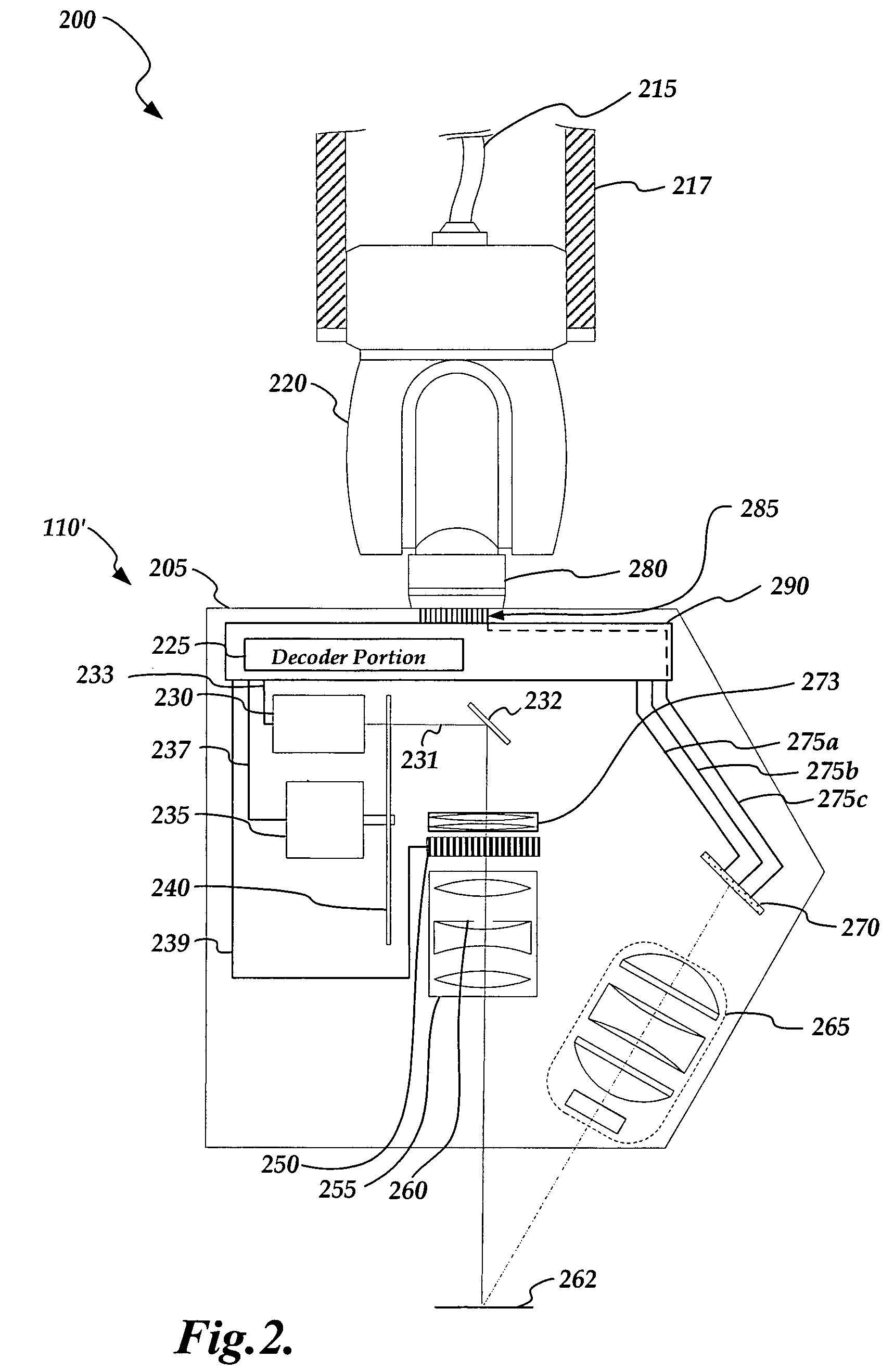Non-contact probe control interface
a control interface and probe technology, applied in the direction of resistance/reactance/impedence, distance measurement, instruments, etc., to achieve the effect of simple implementation and decoding schem
- Summary
- Abstract
- Description
- Claims
- Application Information
AI Technical Summary
Benefits of technology
Problems solved by technology
Method used
Image
Examples
Embodiment Construction
[0024]FIG. 1 is a diagram of a coordinate measurement system 100. The coordinate measurement system 100 includes a coordinate measurement machine controller 120, a computer and user interface 160, a probe controller 170 and a coordinate measurement machine 200. The controller 120 includes a probe head controller 130, a position latch 140 and a motion controller 150. The coordinate measurement machine 200 includes a non-contact structured light probe 110.
[0025]The coordinate measurement machine 200 communicates with all of the other components through a data transfer line 115 (e.g. a bus), which is connected by a connector 175 (e.g. a “micro-D” type connector) to a probe head cable 215 which provides signals to and from the non-contact structured light probe 110. The coordinate measurement machine 200 is controlled by the coordinate measurement machine controller 120, while the non-contact structured light probe 110 is controlled by the probe controller 170. The user may control all ...
PUM
| Property | Measurement | Unit |
|---|---|---|
| power | aaaaa | aaaaa |
| depth of field | aaaaa | aaaaa |
| impedance | aaaaa | aaaaa |
Abstract
Description
Claims
Application Information
 Login to View More
Login to View More - R&D
- Intellectual Property
- Life Sciences
- Materials
- Tech Scout
- Unparalleled Data Quality
- Higher Quality Content
- 60% Fewer Hallucinations
Browse by: Latest US Patents, China's latest patents, Technical Efficacy Thesaurus, Application Domain, Technology Topic, Popular Technical Reports.
© 2025 PatSnap. All rights reserved.Legal|Privacy policy|Modern Slavery Act Transparency Statement|Sitemap|About US| Contact US: help@patsnap.com



